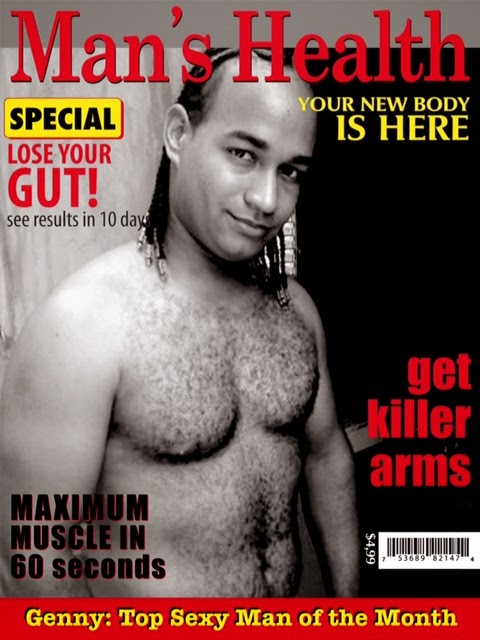Refugee surge to Europe raises concern about militants

|
| Refugees
queue up for a bus, as they arrive at the border between Austria and
Hungary, Heiligenkreuz, Austria, late Tuesday Sept. 15, 2015. Austria's
Interior Ministry says temporary border controls with Hungary will be in
effect immediately after midnight Tuesday. The ministry says the
measure could be extended to the country's borders with Slovenia, Italy
and Slovakia, if needed. That reflects the possibility that migrants now
streaming into Austria from Hungary could instead try to cross into
Austria over those borders in large numbers. |
PARIS (AP) --
When Islamic State extremists lost control of a key crossroads town in
northern Syria in June, some militants shed their jihadi garb and
blended in with the flood of Syrians fleeing across the Turkish border.
Since then, the exodus of Syrians and Iraqis toward Europe has surged -
and Europeans opposed to taking in more refugees say that more than
ever, they fear "disguised terrorists" in their midst.
Governments
along the route have different assessments of the threat. Two senior
Iraqi officials and a Syrian activist say a small group of hardened
Islamic State extremists is believed to have left the war zones of Iraq
and Syria to blend in with the masses of asylum seekers in recent weeks.
Intelligence
officials in France and Germany expressed skepticism, saying they have
no specific evidence. The Soufan Group, a security consulting firm, said
Monday that some infiltration was probable but the extent of the danger
was unknowable, making it "susceptible to exaggeration and
exploitation."
The disarray of Europe's asylum
procedures in the face of thousands of applications has heightened
worries, although security experts say Europe is at far greater risk
from homegrown Islamic State sympathizers with valid European travel
documents and the means to plan an attack.
Leaders
of countries opposed to taking in the refugees routinely cite the fear
as one of their primary reasons. The concerns are fanned by lines of
exhausted refugees, bedraggled families walking northward along railroad
tracks, and trains carrying refugees between countries with minimal or
no identity checks, straining a system already near the breaking point.
Even
Pope Francis urged caution. In an interview with a Portuguese Catholic
radio station broadcast Monday, he recalled that the Bible requires that
strangers be welcomed, but acknowledged the need for precautions.
"It's
true that 400 kilometers (250 miles) from Sicily there is an
exceedingly cruel terrorist guerrilla group, and it's true there's the
danger of infiltration," Francis said.
U.S. intelligence officials also are worried that Europe's disorganized response will allow terrorists to circumvent checks.
"We
don't obviously put it past the likes of ISIL to infiltrate operatives
among these refugees," Director of National Intelligence James Clapper
said Sept. 9, using an alternate acronym for the Islamic State group. He
said the U.S. is aggressively screening the small number of Syrian
refugees it has accepted, but is not so sure every European country is
using similar vigilance.
A top Iraqi
intelligence official said 20 Islamic State fighters from Syria and
Iraq, trained and selected by senior IS operatives, are believed to have
slipped into Europe in recent weeks to plan attacks. The chaos of the
mass movement northward "is a chance that will never be repeated," he
said. The official declined to say where the men were believed to have
landed or whether they are coordinating with each other, but said the
Iraqi government is working with European authorities to trace them and
learn their plans.
Both he and a second Iraqi
official said as many as 100 suspected defectors have also made it
through, fleeing the grip of the extremist group the only way they
safely can. The Iraqis said the defectors were discovered when they
failed to show up for morning roll call and have not been tracked beyond
Turkey.
A Syrian activist who works against
both the regime and Islamic State also said a handful of extremists
traveled to Europe. He said there were indications that many more made
the journey in the past three months from the northern provinces of
Hassakeh, Raqqa and Deir al-Zour, through Turkey and then European
shores. The activist said he saw one of the fighters being interviewed
on television as a refugee.
The Iraqis and the
Syrian spoke on condition of anonymity - the former because they were
not authorized to talk to the media about the sensitive information and
the latter because he feared for his safety and the lives of colleagues
who gathered the information.
Other activists
expressed doubt that significant numbers of extremists were among the
refugees. A Syrian living in Turkey who goes by the name of Abu
al-Hassan Marea said it is not far-fetched that some IS members have
infiltrated the refugees in Europe but he knew of no organized
initiative. The overwhelming majority of refugees are fleeing the war:
"From the tens of thousands, there are maybe one or two," he said.
Marea
said he believes the Islamic State group's primary aim is to draw
Western militaries into Syria, not to go out to meet them on their home
turf.
An edict in Islamic State's Dabiq magazine bolstered that view and offered indirect evidence that defections are a problem.
Deadly
attacks this year in France were carried out by homegrown extremists,
not migrants from the Mideast. But the Islamic State group's repeated
threats to strike in Europe have left many fearful and have fueled the
arguments of people opposed to accepting more refugees. It's not clear
how imminent the threat to Europe might be compared with the thousands
of Syrians and Iraqis fleeing violence in their homelands.
Marc
Trevidic, until recently a top French terrorism judge, criticized a
group of French mayors who said they would give priority to Christian
refugees because of fears of "disguised terrorists."
"Because
there is a risk that a few people among the migrants may be from
Islamic State, we should do nothing? That's the talk of those who do not
want to accept migrants, but it's a little too simplistic," he told BFM
television last week. "They have absolutely no need of that to send
people. There are enough French, Belgians who have passports or identity
cards that can return to carry out attacks."
In
addition, there are other extremist groups and no shortage of
hard-liners in Syria and Iraq, some of them affiliated with al-Qaida,
which has also vowed to carry out attacks in the West.
In
June, when the Islamic State group seized the frontier town of Tal
Abyad, thousands of Syrians fled into Turkey in chaotic scenes, with
some crossing illegally through holes in fences. At the time, activists
said the militants were mingling with the refugees and trying to hide
their identities.
Magnus Ranstorp, a Swedish
counterterrorism expert, emphasized that although it was probable people
with links to terrorist groups are among the migrants from Syria and
Iraq in the recent waves, Europe already is coping with the risk of its
own radicalized citizens. Efficient screening during the asylum process -
which includes fingerprinting, photos and a cross-check of European
records - can reduce the risk, he said.
"There's no way one can guarantee 100 percent that terrorists are not coming through," Ranstorp said.
Any
numbers of extremists are likely to be small, but the issue is highly
sensitive in Europe, both on the far right and among mainstream
politicians.
"We haven't any terrorism in our
region and I don't want to somehow escalate the situation and increase
the possible threat level," said Raimonds Vejonis, the president of
Latvia, where in August about 300 people protested the government's
decision to accept 250 refugees.
"We know that among refugees, there also could be some terrorists, maybe. And that is the main fear of our society," he told AP.
A
spokeswoman for the German Interior Ministry said they have "no
reliable information" that any individuals or groups have tried to enter
Germany amid the migrant flood. Germany's foreign intelligence service,
the BND, refused to comment on the specifics offered by the Iraqi
officials.
A BND spokeswoman pointed to a
Sept. 7 interview by BND head Gerhard Schindler with the newspaper Bild,
where he said "it is still unlikely that terrorists would attempt to
recklessly cross the Mediterranean in a boat to get to Europe. They
could do that with false or stolen papers and a plane ticket much more
easily."
Neither spokeswoman would be quoted by name.
The
top Iraqi official said going into Europe with a false document is more
of a risk and can only be done on a very small scale.
German Chancellor Angela Merkel has pointed out that many of the Islamic State's fighters are European.
"The
fight against Islamic State reminds us again and again that fighters
there come from our countries - from Germany, Great Britain, France,
from European countries," she said. "That means we can't just say that
there's a problem somewhere out there; it concerns us."






















